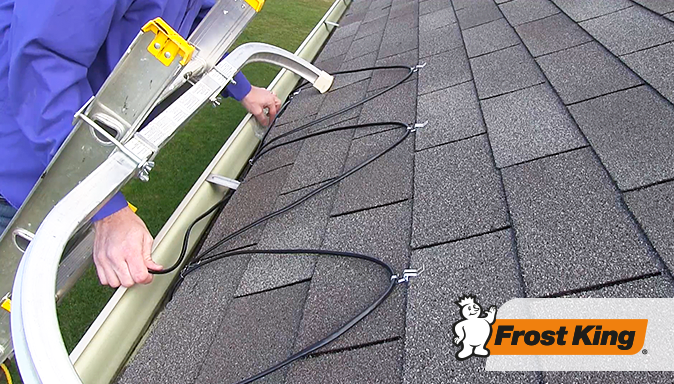According to energy.gov, the average cost to replace a roof is about $10,000, which is a lot of money to shell out at one time. But the good news is that if you keep it properly maintained, a new roof can last anywhere from 20 to 50 years.
Protect your investment and prolong the life of your roof: we’ve got four tips to keep your roof in good shape and avoid having to replace it before its time.
Inspect Your Roof and Repair Broken Shingles
Once a month, make it a habit to inspect the roof to look for cracked or missing shingles or areas where water pools and isn’t draining. You don’t need to climb up on the roof — just grab a pair of binoculars and do a quick visual scan. If you notice any damage, repair it quickly before a small issue turns into a big and expensive problem.
Clean Your Gutters
Gutters work by directing water off your roof and away from your home—but if they’re clogged or damaged, they can’t do their job and water will collect on your roof, weakening the shingles, soffit (the part of the overhang where the roof and siding meet), and fascia (the “transition trim” behind the gutter that runs along the bottom edge of the roof) and causing damage to your windows, siding, and foundation. Follow these step-by-step instructions to clean your gutters, then install downspout guards, downspout screens, snap-in gutter screens or mesh gutter guards to keep gutters clear so water can move through them.
Trim Overhanging Branches and Clear Leaves
Tree limbs and branches that hang over your roof pose a number of risks: they can scrape across the shingles and strip away the asphalt, fall and cause major damage, and provide squirrels and other rodents with easy access to your home. Any branches that are within 10 feet of your home should be trimmed back. But take note that unless you know what you’re doing, this is a job for a professional: one wrong move and you can cause expensive damage to your home or seriously injure yourself.
Overhanging branches can also lead to leaves collecting on your roof, where they trap moisture and decompose. This creates an environment where mold, algae, moss, and even weeds can start sprouting on the roof. If you have a low-pitched roof, you can simply use a leaf blower or a broom on an extension pole to pull the leaves down. If you have a high-pitched roof, you’ll need to use a roof rake to remove leaves or call in a professional to safely get the job done.
Prevent Ice Dams
Take a look up at the roof: do you see icicles dangling from the gutters and mounds of ice on the roof? These are signs of an ice dam, which form when water from melting snow freezes at the edge of your roof, before it can drain into the gutters. This ice can back up on your roof, peeling back the shingles and letting water leak into your home. To see if water has seeped in, check the attic and exterior walls for water stains or moisture, blistering paint, or other signs of damage.
Once ice dams have formed, you can use a roof rake to remove snow along the edge of the roof—but even better is to stop them from forming in the first place. Frost King’s roof cable kits are an affordable, easy-to-install solution that keeps melt water flowing through gutters and downspouts, even in frigid below-zero temperatures. They’re secured along the eaves with strong, durable clips and give off heat to prevent melted snow from refreezing before it reaches the gutters. Watch this video to learn how to install our Roof and Gutter De-Icing Kit:
Your roof is one of the most important parts of your home, but it’s easy to forget about it. These simple maintenance steps can prolong the life of your roof and keep it in great shape for years to come.
